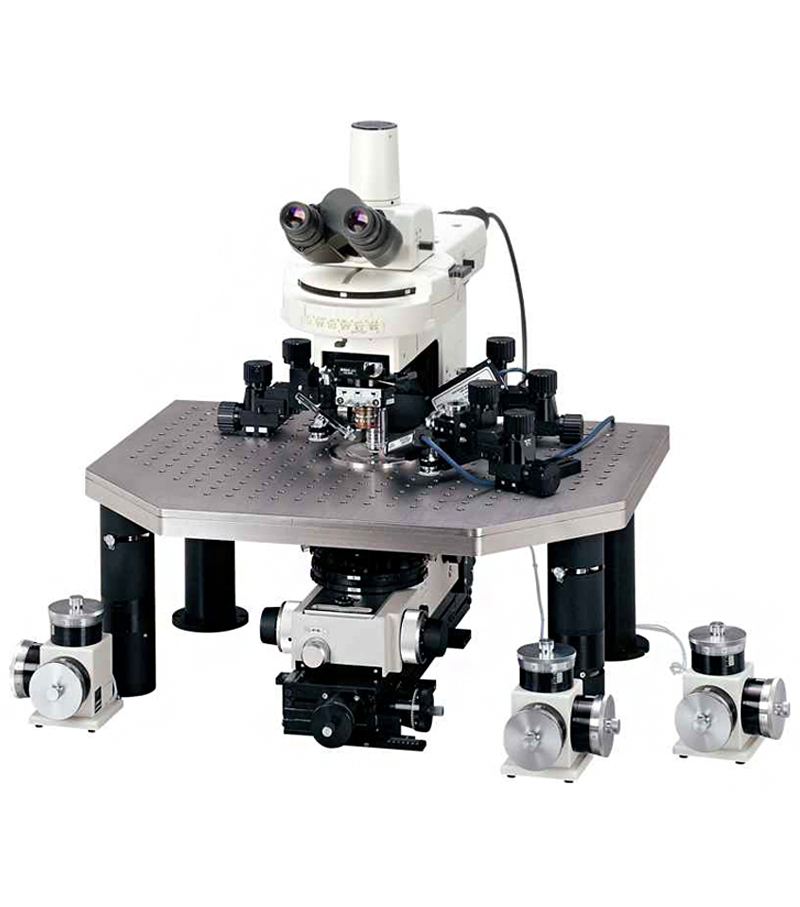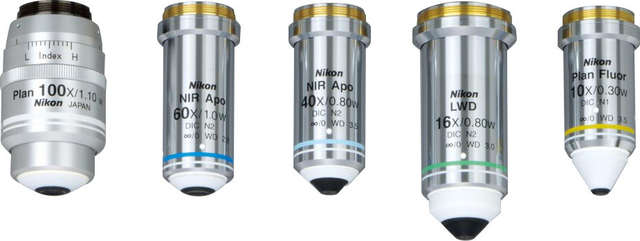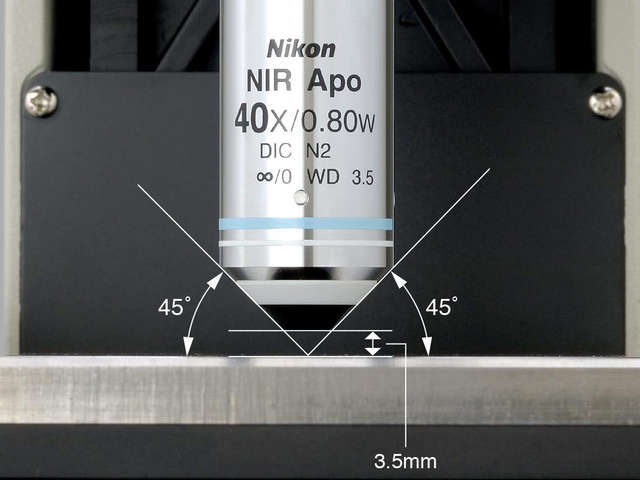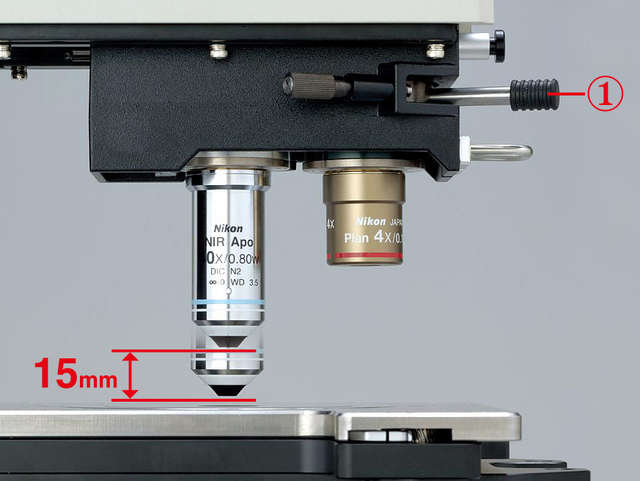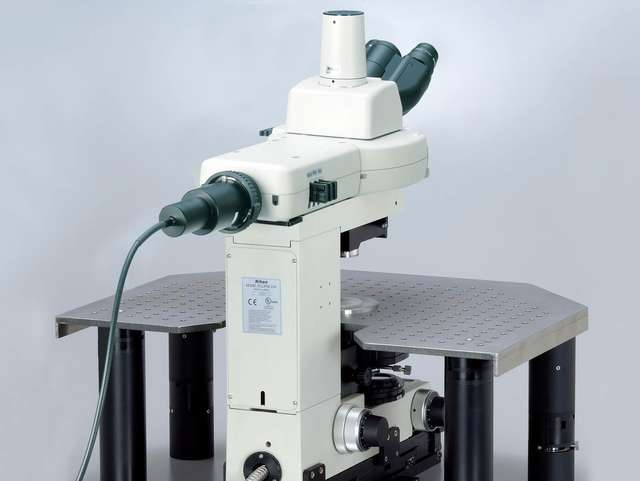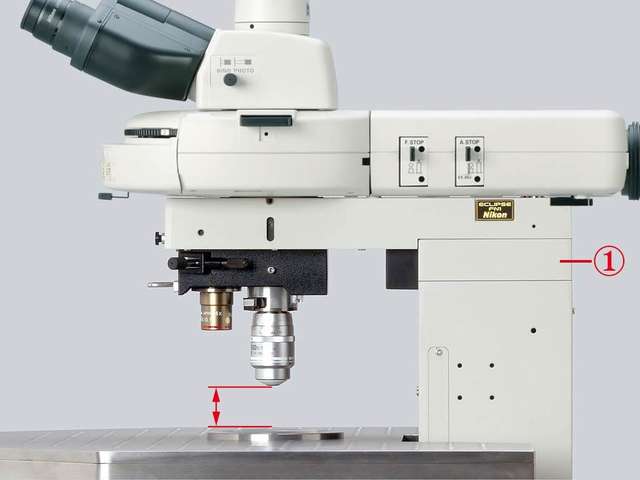One lens covers from low to high magnifications
The high NA, long working distance 16x objective (NA 0.8, WD 3.0) allows observation at broad magnification range from 5.6x to 64x when combined with an optional variable magnification double port. This objective enables observation from a low magnification widefield of up to 2.0mm to a high magnification high resolution field without changing objectives.
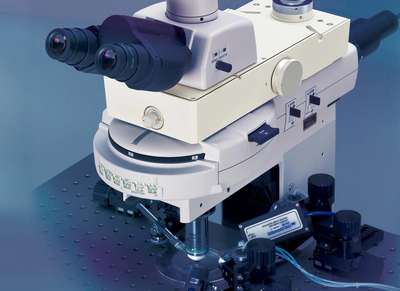
FN1 with variable magnification double port
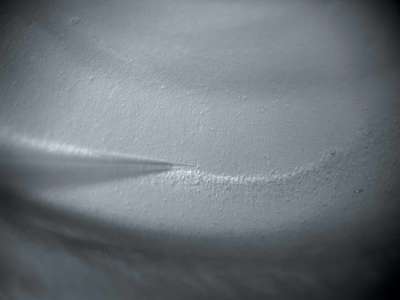
5.6x
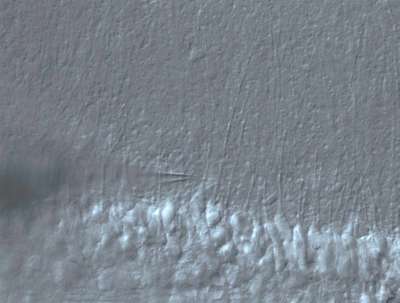
32x

64x

